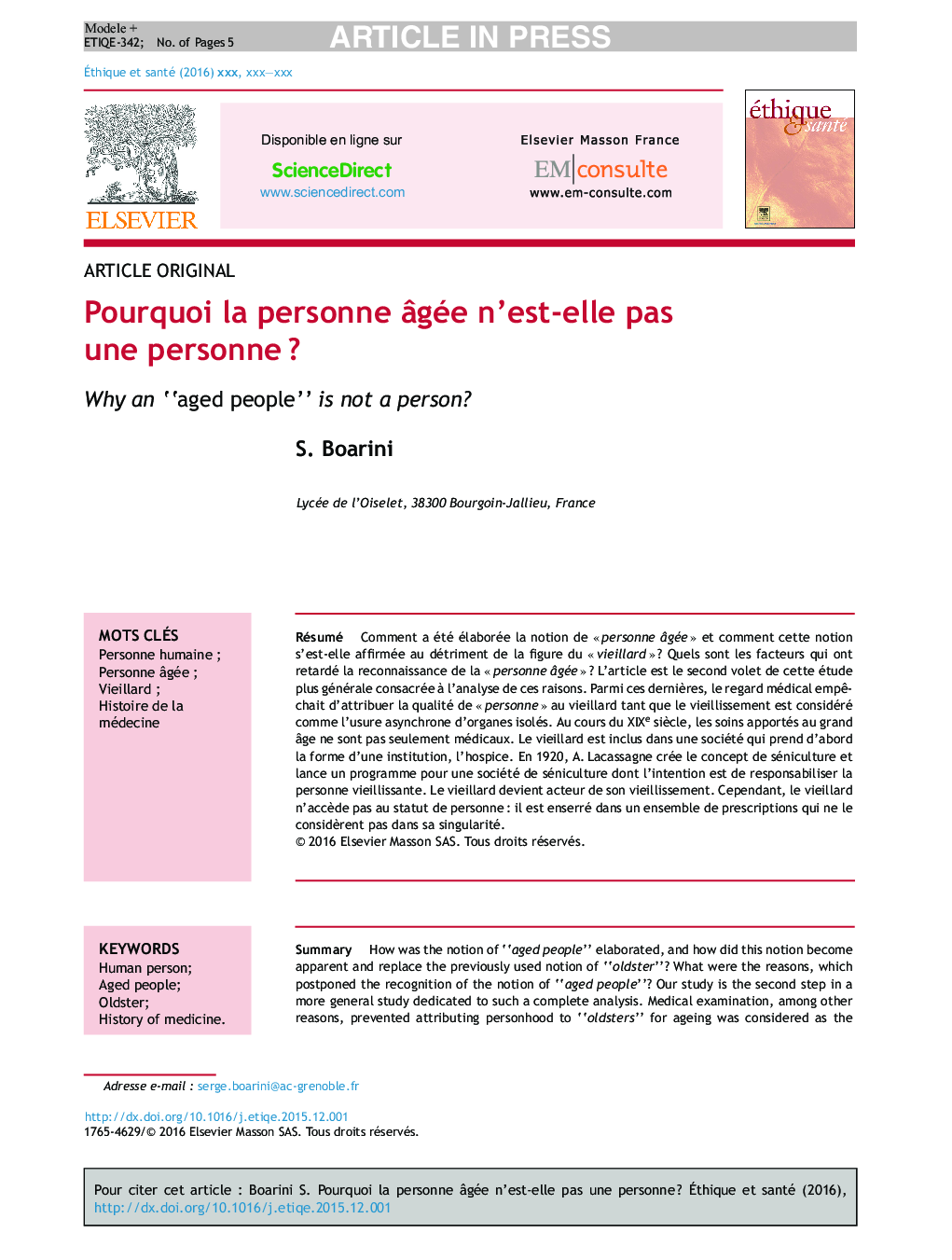| کد مقاله | کد نشریه | سال انتشار | مقاله انگلیسی | نسخه تمام متن |
|---|---|---|---|---|
| 1072434 | 1486220 | 2016 | 5 صفحه PDF | دانلود رایگان |
عنوان انگلیسی مقاله ISI
Pourquoi la personne âgée n'est-elle pas une personne ?
دانلود مقاله + سفارش ترجمه
دانلود مقاله ISI انگلیسی
رایگان برای ایرانیان
کلمات کلیدی
موضوعات مرتبط
علوم پزشکی و سلامت
پزشکی و دندانپزشکی
سیاست های بهداشت و سلامت عمومی
پیش نمایش صفحه اول مقاله

چکیده انگلیسی
How was the notion of “aged people” elaborated, and how did this notion become apparent and replace the previously used notion of “oldster”? What were the reasons, which postponed the recognition of the notion of “aged people”? Our study is the second step in a more general study dedicated to such a complete analysis. Medical examination, among other reasons, prevented attributing personhood to “oldsters” for ageing was considered as the asynchronous impairment of isolated organs. During the 19th century, taking care of aged people was not only a medical task. Oldsters were included in an association, which was first an institution, the hospice. In 1920, A. Lacassagne elaborated a new concept, “old-age care”, and promoted a program for an association devoted to it. The aim was to give greater responsibility to aged people. Oldsters became actors of their aging. But they did not gain access to the status of a person yet: they were still contained in a set of requirements that did not consider them as distinctive persons.
ناشر
Database: Elsevier - ScienceDirect (ساینس دایرکت)
Journal: Ãthique & Santé - Volume 13, Issue 2, June 2016, Pages 60-64
Journal: Ãthique & Santé - Volume 13, Issue 2, June 2016, Pages 60-64
نویسندگان
S. Boarini,